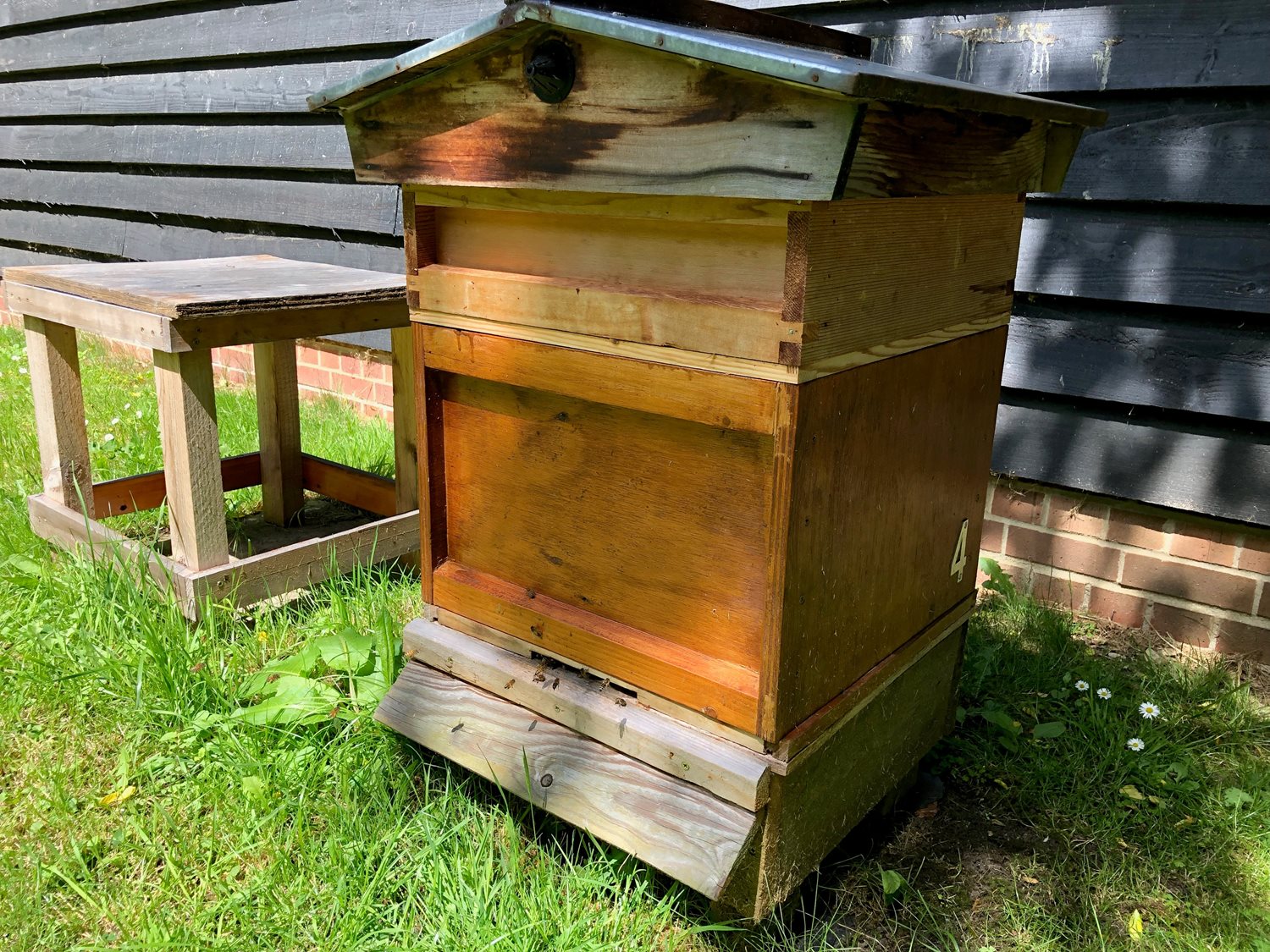Bee Blog June 2022
This month's update from local beekeeper Gerald Bushby
Its turning out to be a very slow spring for my bees. Only now at the end of May have they started to increase rapidly in numbers. The weather is not helping. We have had some hot days but generally there have been many days where the sun has not shone and temperatures are low. In the last week of the month were a few days where the temperature did not rise much above 14 Deg C, not a great incentive for the bees to be out and about.
I have been making regular inspections as with only one remaining hive, the last thing I want is for the colony to swarm and for me to loose half of the colony. If they decide to start making queen cells I will try to split the colony first. If they don’t make queen cells I am still keen to split the colony but I want the colony to be as strong as possible before I start removing frames. Each time I inspect the colony I am keen to spot the queen to reassure myself that she is still alive. At the moment my whole beekeeping activity is dependant on this one queen.
Regular readers will recall that I have often mentioned the desirability of marking the queen to make it easier to spot her during hive inspections. I did manage to spot and mark the queen, the white queen, some weeks ago but having inspected the colony three or four times since the marking I had not been able to spot her until my last inspection a few days ago. As with most queens she is very elusive, perhaps they just like to play games with the beekeeper, but it can be very frustrating carefully inspecting every frame, sometimes going back through them several times, and still not being able to see the queen. If there is brood there should be a laying queen but it is much more reassuring to actually see the queen visually.
I have extensively researched how best to spot the queen during inspections and many beekeepers advise to start looking on the dark side of the frame, when it is removed from the hive during an inspection, first. The theory is that as the queen lives in a dark environment, when the hive is opened up and light enters the hive, if she is on the light side of the frame, it is thought that she will quickly move to the dark for comfort. I think there is some substance in this advice and I have often found queens on the dark side of frames.
This advice started me thinking about the environment in the hive in which the bees live. It is almost always dark. There is the hive entrance and some bottom ventilation holes which will allow some light to enter but for the most part it is dark. I have often said how clever bees are. If we humans move from bright sunlight to a dark inner space we would find movement very difficult, we need artificial light, but not the bee. The worker bee spends much of its time in the bright sunlight collecting nectar and pollen and then returns and effortlessly deposits what they have collected in a completely dark environment repeating the cycle time and time again.
The life of the queen is even more surprising. She spends almost all of her time in the dark. She may only ever emerge from the hive for two events in her life but seems to effortlessly adapt to the light during these events. She first emerges into the light for her mating flights. She then remains in the hive in the darkness perhaps for the rest of her life. The only other time she may emerge is if the hive swarms.
Whilst the queen may move to darkness when the hive is opened for an inspection, being exposed to the light does not seem to disturb her unduly. If the beekeeper is lucky enough to spot the queen on a frame she does not seem to be agitated by this exposure to light but continues to move in her regular pattern apparently adapting to the bright light effortlessly.
My photograph this month is the front of my one remaining hive showing quite a lot of bee activity on a warm sunny day. Long may it continue.


